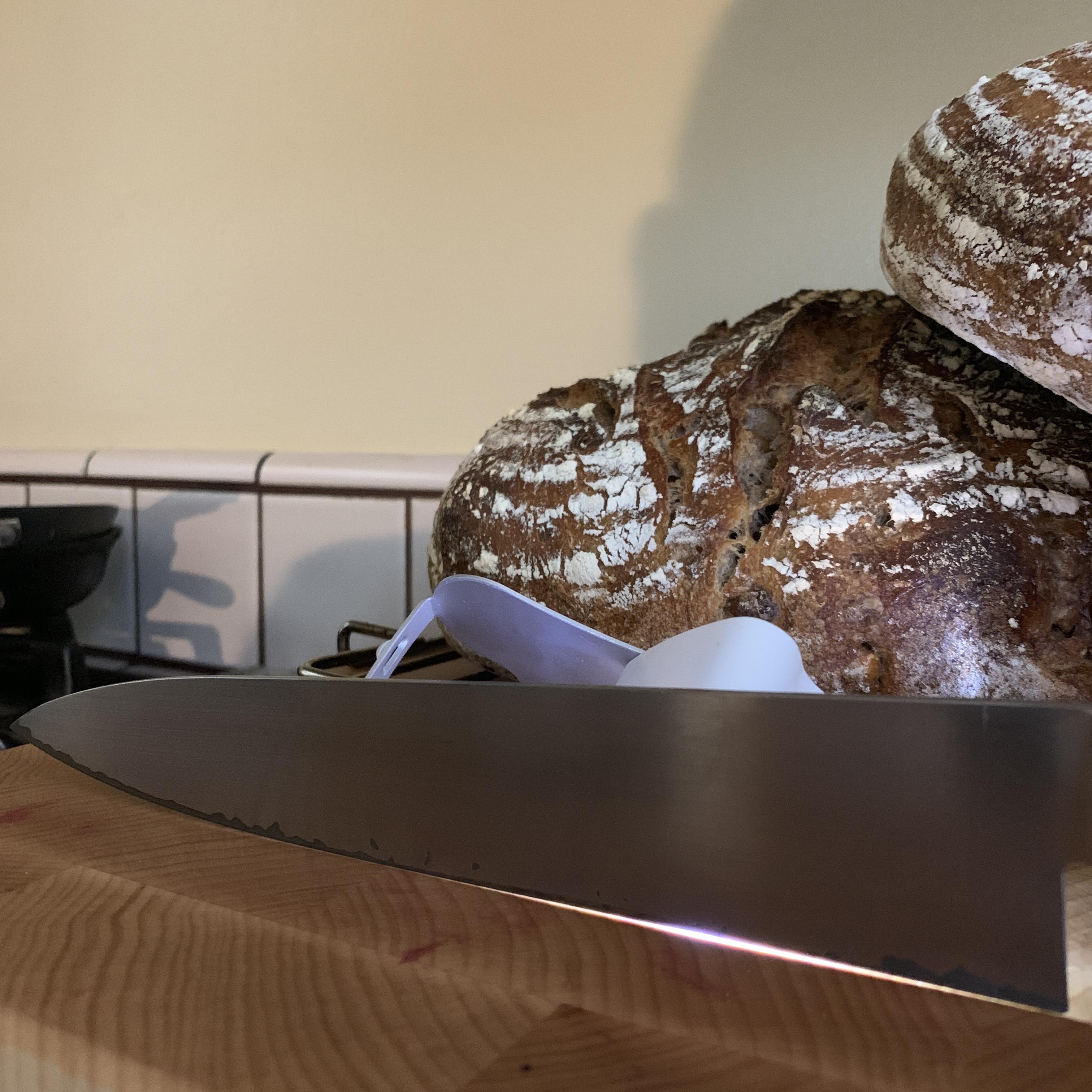The Smith
Member

This is my Hiromoto gyuto 210. I've owned it for about 4-5 years, and It's my first quality Japanese knife. I sharpen it on a 1000-grit water stone. A couple months ago, I noticed the cutting edge was presenting some concavity toward the heel. For the photo, I placed a light source behind the knife so you can see the crack where the light is getting through.
I've watched 2-3 hours of Jon's instructional videos on sharpening over the past several years, but I've not been able to have someone watch me sharpen directly and offer a critique. I feel like my technique approximates his, but obviously, something is going wrong!
I recently purchased a Kochi gyuto 240mm, and I'd hate for the same thing to happen to it based on my poor technique.
Any suggestions?
Thanks in advance,
—Colin






